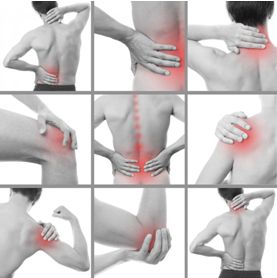Osteopathy is a system of diagnosis and treatment based on traditional medicine, centred on drug free non-invasive manual therapy.
Osteopathy considers the human body as a whole, and does not solely treat the symptoms (e.g. pain), but goes further to look after the cause (e.g. joint disorder). Osteopaths build their practice on 4 core principles:
- The Person is a Unit
- The Body is capable of Self-Heal and Self-Regulate
- The Body’s Structure and Function are reciprocally interrelated
- Rational treatment is based on these principles

By merging these principals with traditional medical assessments and diagnosis, osteopaths aim to avoid the use of medications and surgical procedures. Where possible, the role of the osteopath, is to help the human body to repair the damage naturally. Osteopaths help the musculoskeletal system retrieve strength to treat existing conditions and to prevent issues in the future.
Osteopathy is a practice which includes: diagnosis, treatment, rehabilitation and prevention of disorders and conditions related to the whole musculoskeletal system. Furthermore it takes into account how this condition are linked to the patient’s health and general well-being.
Osteopathy explained
When the body is not in equilibrium, there are stronger and weaker muscles. A bad diaphragmatic breathing, on the long run can lead to a hyper kyphosis, with a hypertrophy of the pectoral muscles. This adaptive posture will disadvantage the trapezius and the whole musculature of the back. Back pain and cervical pain are only a mechanical consequence, as it is the compression of the heart and lungs.
With osteopathy we treat the causes of these dysfunctions, bringing the body back to its natural freedom of movement, limiting and removing the symptoms.
Osteopathic treatment adaptability
Osteopaths treat a wide range of conditions, from chronic pain to acute injuries. Using a variety of techniques, osteopaths are suitable for all: children, adults, seniors, pregnant women, and sportsmen alike. Whit their treatment, osteopaths, can also targets various anatomical structures (joints, ligaments, muscles, fasciae) that can limit the body in its normal physiological functioning.

The ability to perform a treatment in a range of extremely gentle to more forceful manner, combined with a direct or indirect approach, has lead practitioners to look differently at the application of the techniques, generally making the decision on a case-by-case basis of clinical presentation.
This hands on discipline is adapted for each patient making each treatment unique. The Osteopath must understand the nature of the dysfunction and the technique best suited to treat it successfully.
Osteopathy accessible to ALL at any TIME
Although most patients consult osteopaths following an episode of pain or discomfort, the osteopaths can play a preventive and curative role that we should not underestimate. Over periods of time we accumulate muscular tensions, emotional and physical traumas, and stress, these will be stored in our bodies until a breaking point. On a day to day basis we do not notice these accumulations but osteopaths can. Their job is to identify them and exercise a curing and preventive role to rest them before reaching a breaking point, or what is perceived by patients as pain or discomfort.
A monthly osteopathic check-up can prevent the manifestation or intensification of many symptoms.
Benefits of Osteopathy Include:
– Effective in treating older or poorly-treated injuries (chronic) as well as more acute conditions.
– Prevention against recurring patterns of pain and discomfort, addressed to all the population: adults, sportsmen, infants, pregnant women, and seniors.

Osteopathy can exercise a central role in the prevention and management of these musculoskeletal conditions.

